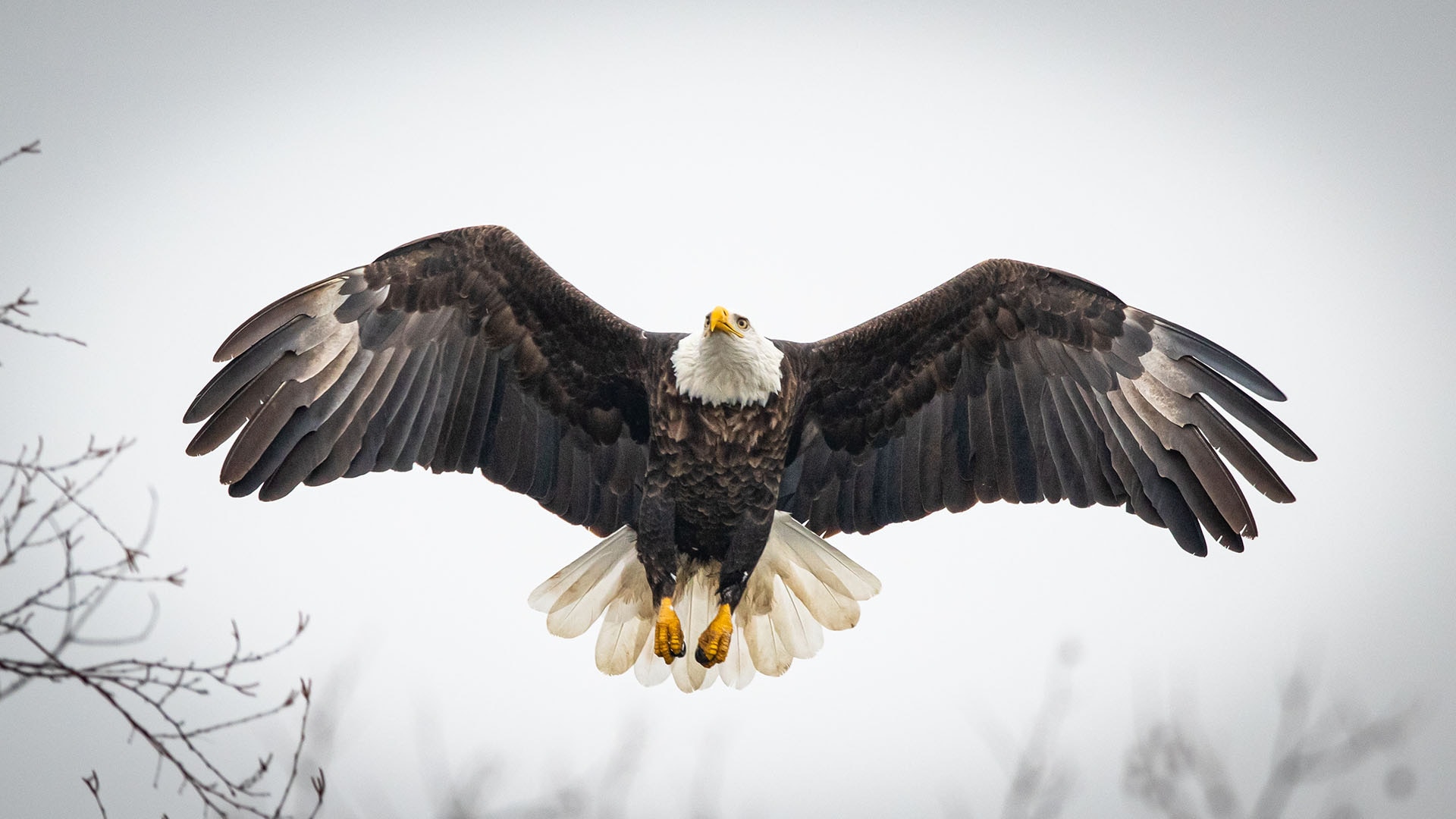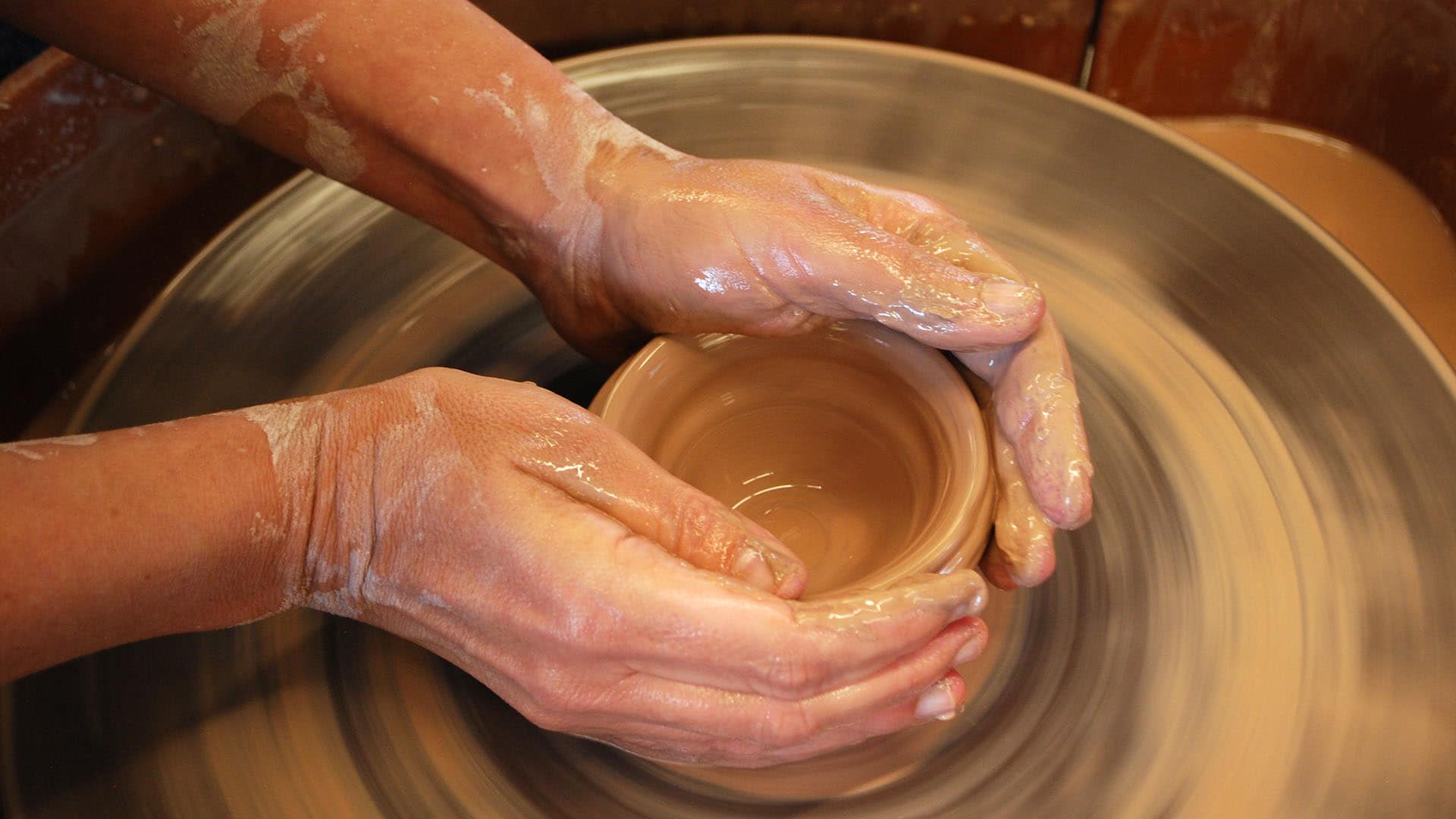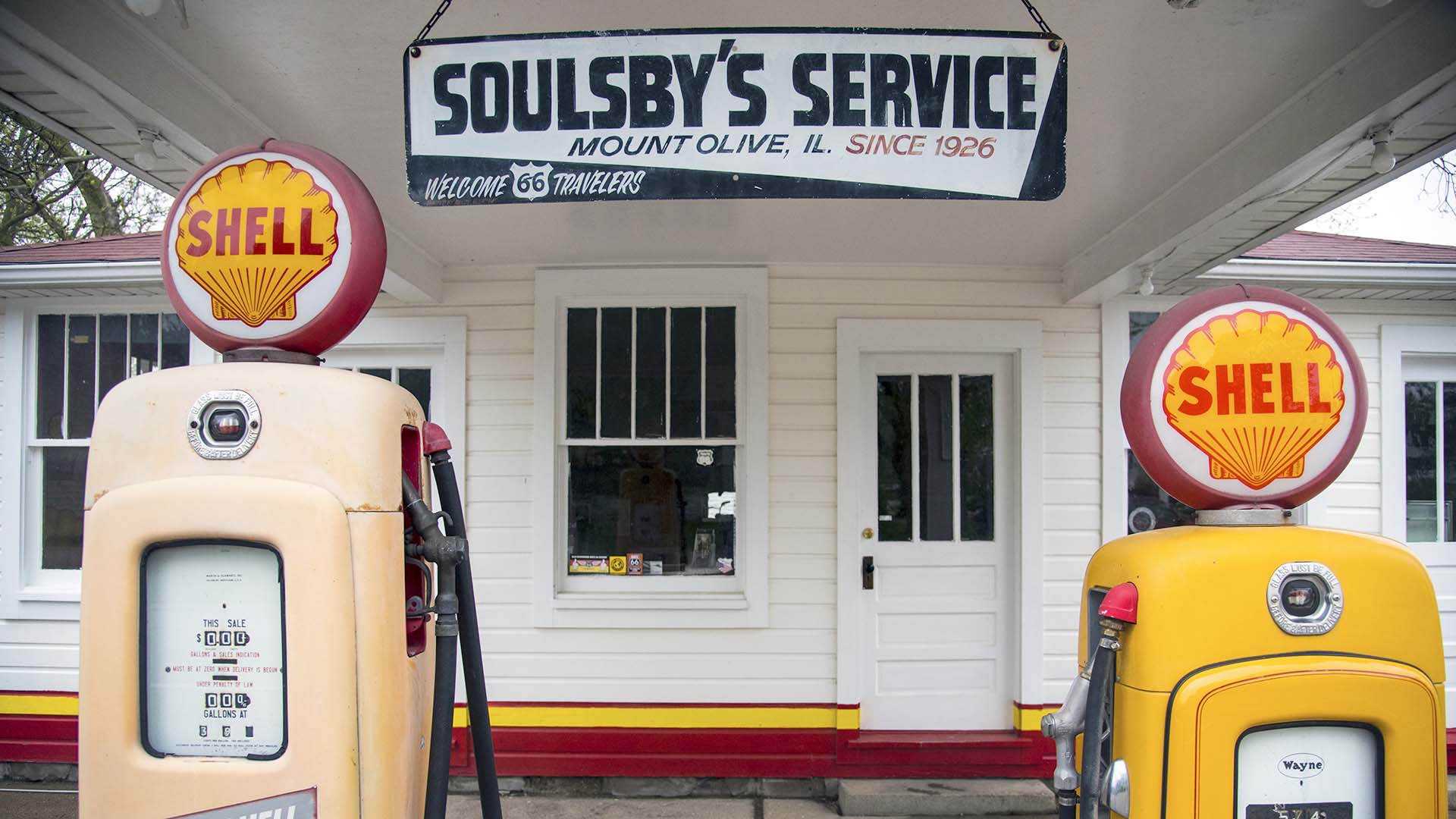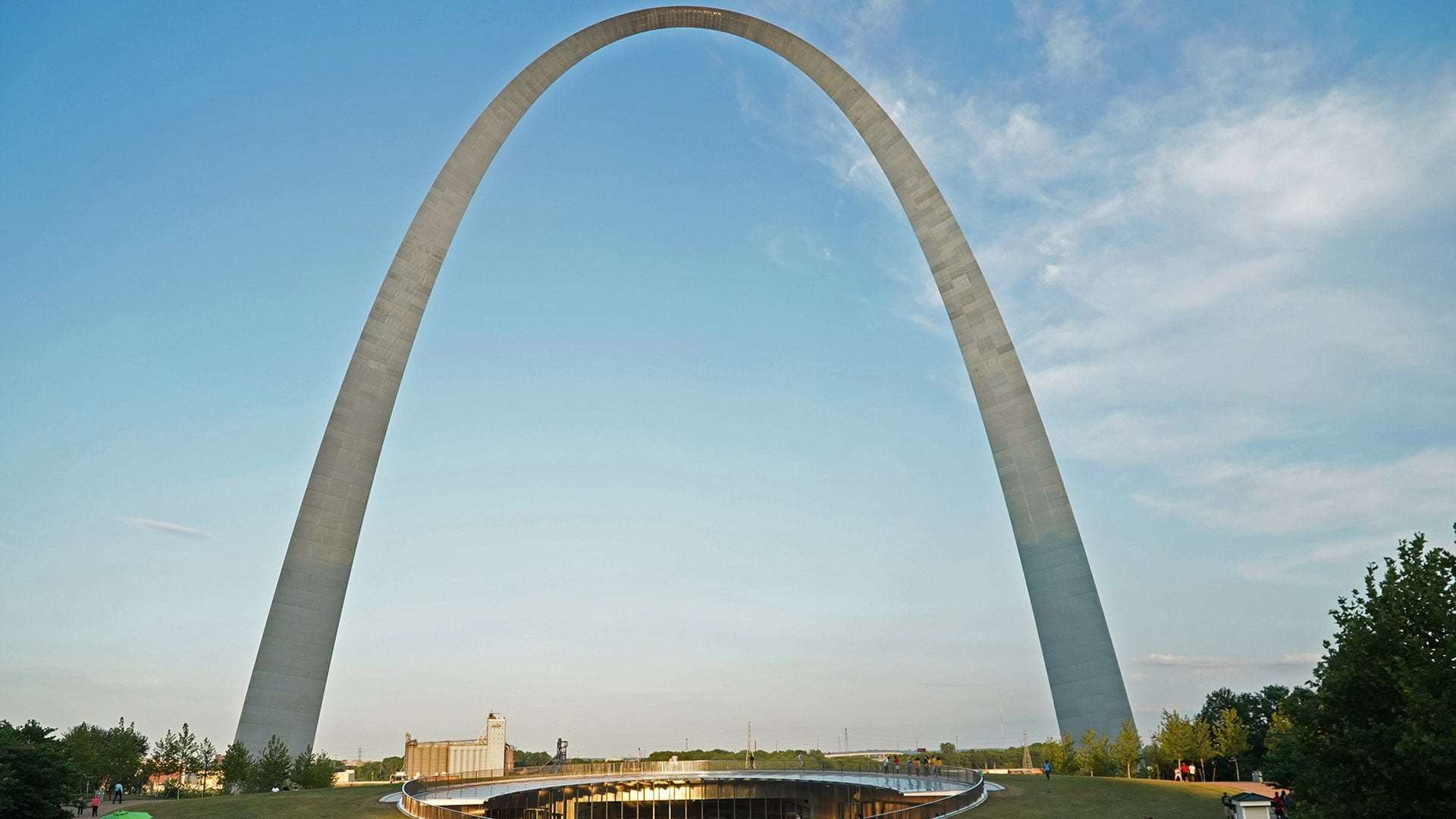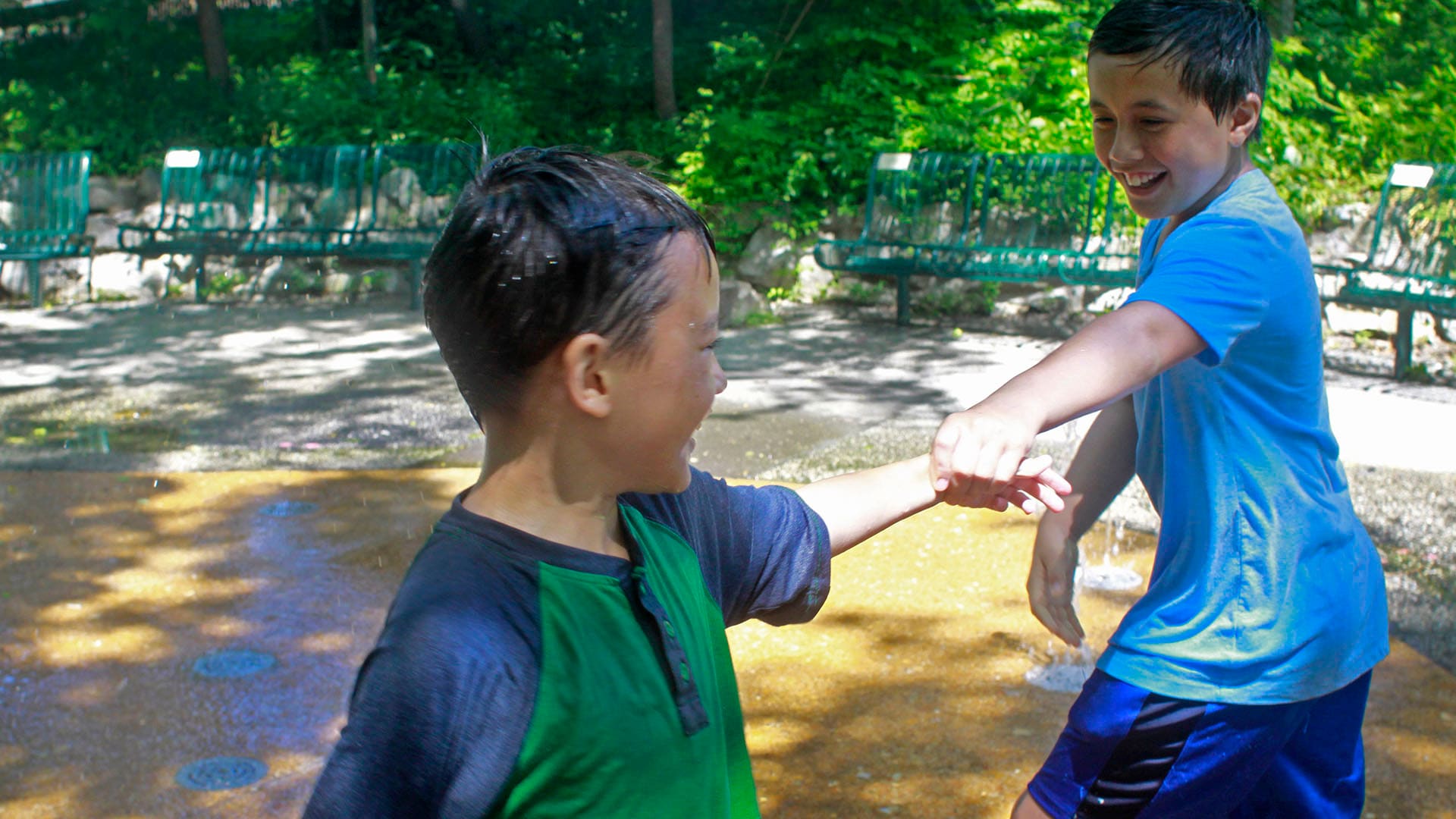Floating with Friends on Ozark Rivers
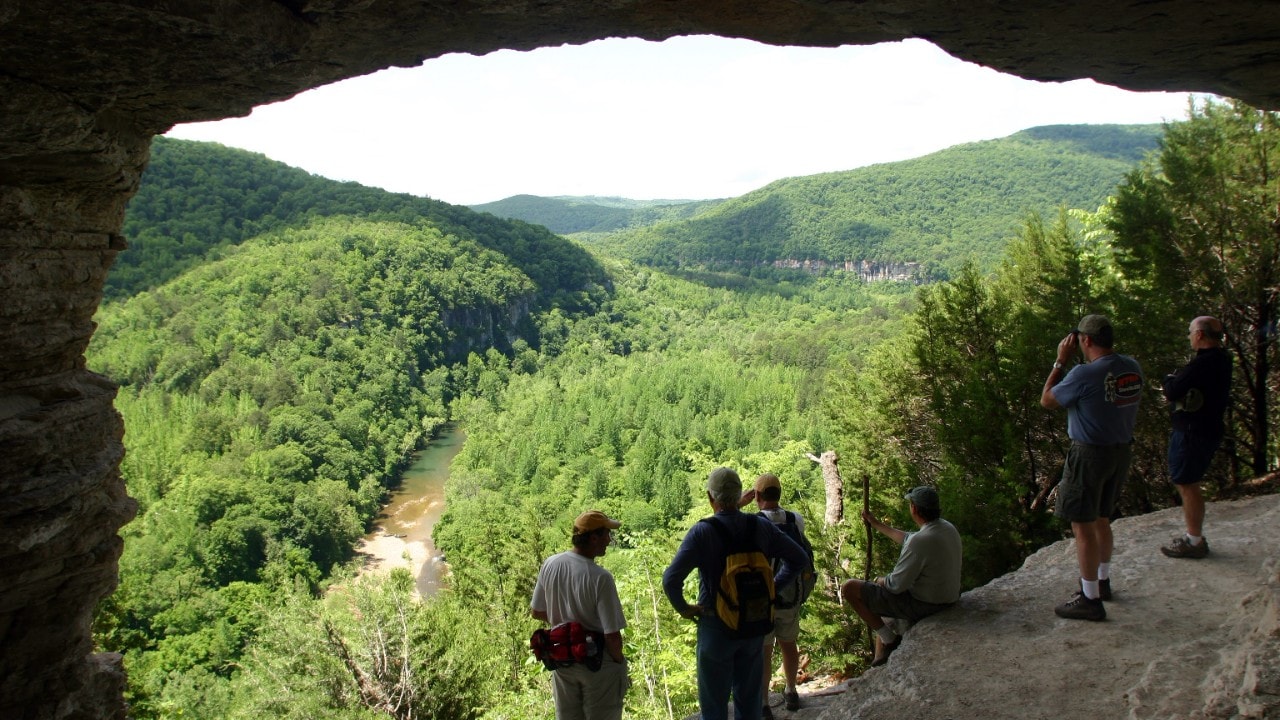
The Goat Trail provides a bird's-eye view of the Buffalo River as it cuts through the Boston Mountains of northwest Arkansas.
Story and photos by Tom Uhlenbrock
Tom is an award-winning travel writer based in St. Louis.
For almost half a century, a group of high school buddies has bonded on the water.
Florida and California have their beaches. Colorado has its mountains. Missouri has its crystal clear Ozark streams, perfect for family-friendly float trips.
After a binge of dam building in the first half of the 20th century, America decided to preserve the best of its remaining free-flowing rivers, based on their wild and scenic values.
In 1964, Congress established the Ozark National Scenic Riverways, a national park along 134 miles of the Current and Jacks Fork rivers in southern Missouri. The two, which had been targeted for a series of dams, became the nation’s initial rivers to be federally protected for generations to come.
My generation was the first to benefit. My friends and I started out on summer Saturdays, floating with the crowds, camping on gravel bars, returning home with a sunburn and hangover.
But what began as a youthful party among high school buddies has evolved into a lifetime passion. Every spring and fall, we take a timeout from our families and careers to meet again and float the Ozark rivers.
Now going on 50 years, floating has been a constant thread in our changing worlds. Two of our original members have passed on, and the remaining 15 or so toast them, and roast them, at every reunion.
We have had productive lives. An informal census over breakfast at our last November float found the 13 members present accounted for 20 wives, 35 children and step children and 46 grandkids.
There also were eight heart stents, four knee replacements and one new ankle.
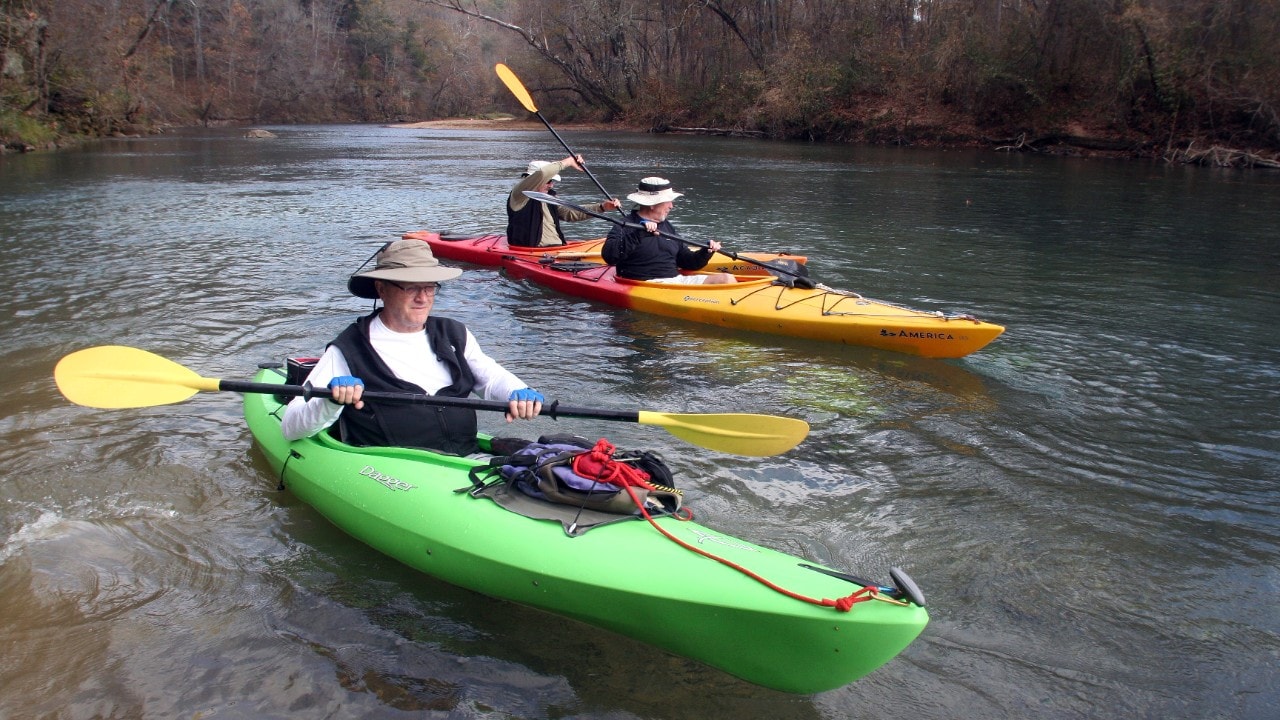
Dave Hinkson leads the way at the start of a float on the Current River.
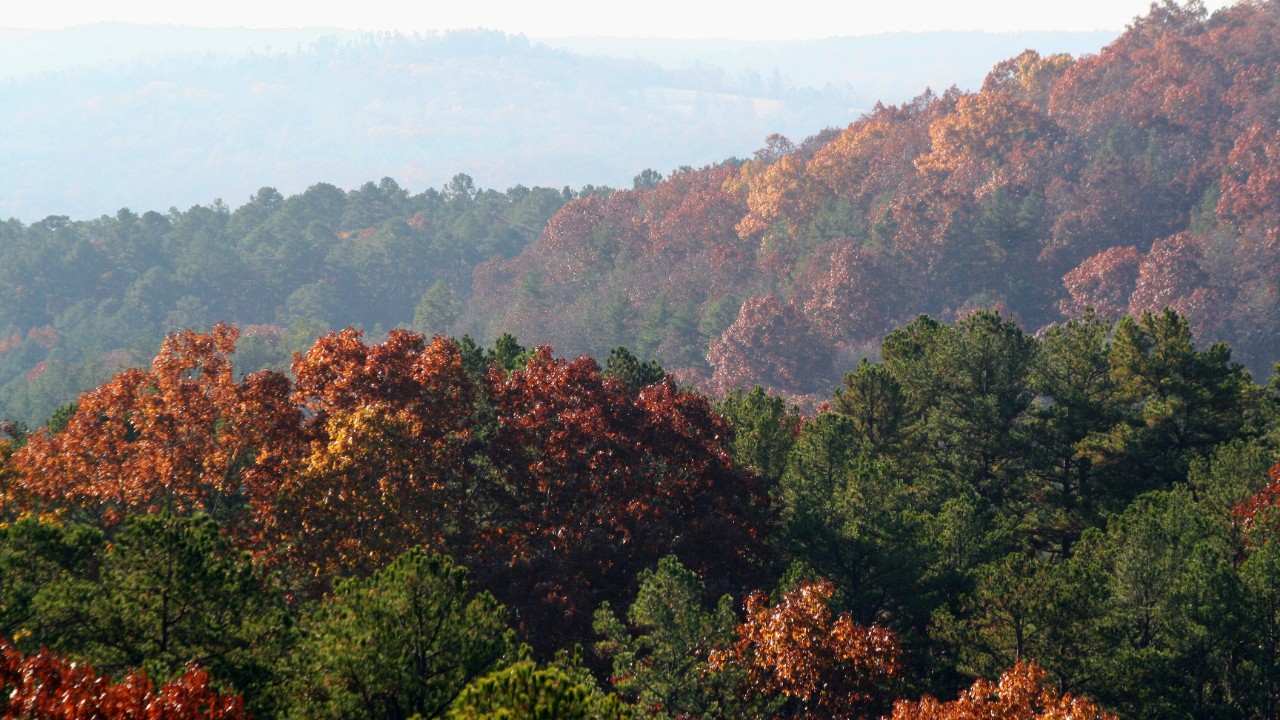
The mixed forest of hardwoods and pines provides a mosaic of autumn colors in the Current River Valley.
Springs and Serenity
To see why floating the rivers has a reserved place in our schedules, it helps to understand why the Ozarks is special.
The wooded hills, cut by deep valleys with sparkling streams, cover much of southern Missouri and northern Arkansas. The lush landscape is not built on solid ground. Mildly acidic rainwater seeps into the cracks and fissures of the porous limestone bedrock, eroding out an underground maze of caves. Missouri is known as the Cave State, with nearly 6,400 registered caves.
Those caves fill with water that bursts to the surface as springs that feed the clear, cold rivers. The Ozarks National Scenic Riverways is home to more first-magnitude springs — those with a daily flow of more than 65 million gallons of water — than any other area on Earth. The biggest is aptly named Big Spring with an average daily flow of 286 million gallons, enough to fill a major-league stadium in one day. With 26 known springs along its route, the Current River is mostly spring fed, making it floatable year round.
This is not whitewater floating; helmets are not required. Ozark rivers are mostly shallow, with gentle floating between the occasional riffle and twisting turn that provide a bit of sport. With sand bottoms and gravel bars for picnics and camping, an eight- to 10-mile float offers a five-hour joy ride.
Summer Saturdays are still crowded, but nearly any other day can bring a taste of wilderness. Our group floats in the spring, when the redbuds and dogwoods are blooming, and in the fall, when the mixed forest of hardwoods and pines is a mosaic of autumn colors.
Some of us also squeeze in a New Year’s Eve float with our wives. Moving silently on the water after a snowfall can be a religious experience.
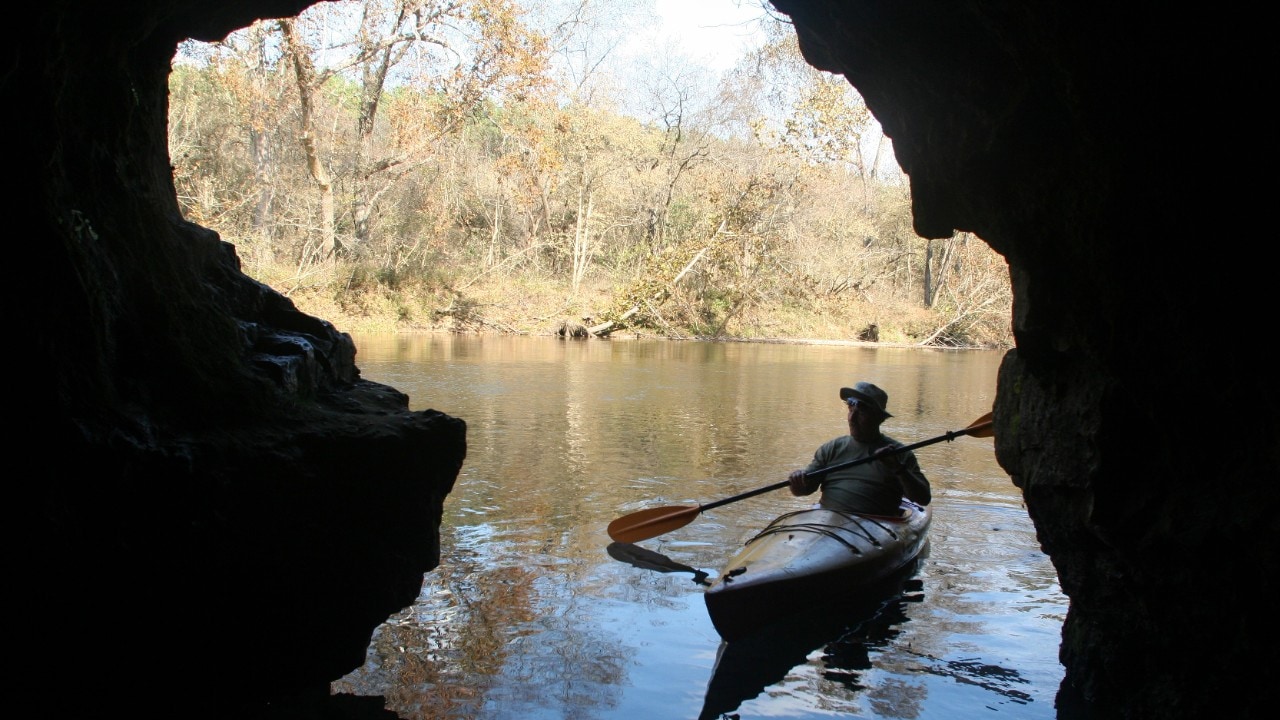
Ozark rivers are lined with bluffs that include float-in caves for exploring.

The group stops for a lunch break along a river bank.
Hope for the Best
On the first weekend of November, we gather at Montauk State Park, a popular trout-fishing park where springs form the headwaters of the Current River. We float from the park’s boundary 10 miles to the Cedar Grove access and drive back to our cabin for dinner. The next day, the float is eight miles from Cedar Grove to Akers.
In spring, we head to Arkansas to float the Buffalo.
We are a loose-knit group — no rules, no dues, no hassles. We do have an unofficial president for life, who got the nod because he is the best cook. We eat, and drink, well. Everybody shares in clean-up duties, except for the chefs.
We do have an awards ceremony. The Broken Paddle is presented to the floater who messes up the best. Last year was an easy choice; one original member fell getting into his kayak on the first morning, rupturing a tendon that holds the kneecap in place. Fortunately, we have an emergency room doctor in the group. Duct tape is often his bandage of choice on the water.
We no longer camp on the river. Our motto at day’s end is: A hot shower, a cold drink and a warm bed, in that order.
When we started out floating some five decades ago, aluminum canoes were our vehicles. We quickly discovered hard plastic kayaks, which are easily transported, easily maneuvered and indestructible. Most of ours are 12-footers, which can hold coolers, camp chairs and dry bags with a change of clothing.
A rule of the river is to hope for the best, but plan for the worst, especially when heading out in chilly weather. On three floats during our November adventure, four guys got wet, including yours truly. One got dumped twice.
The water was fine.

Joe Bowers shares a laugh with a longtime buddy.
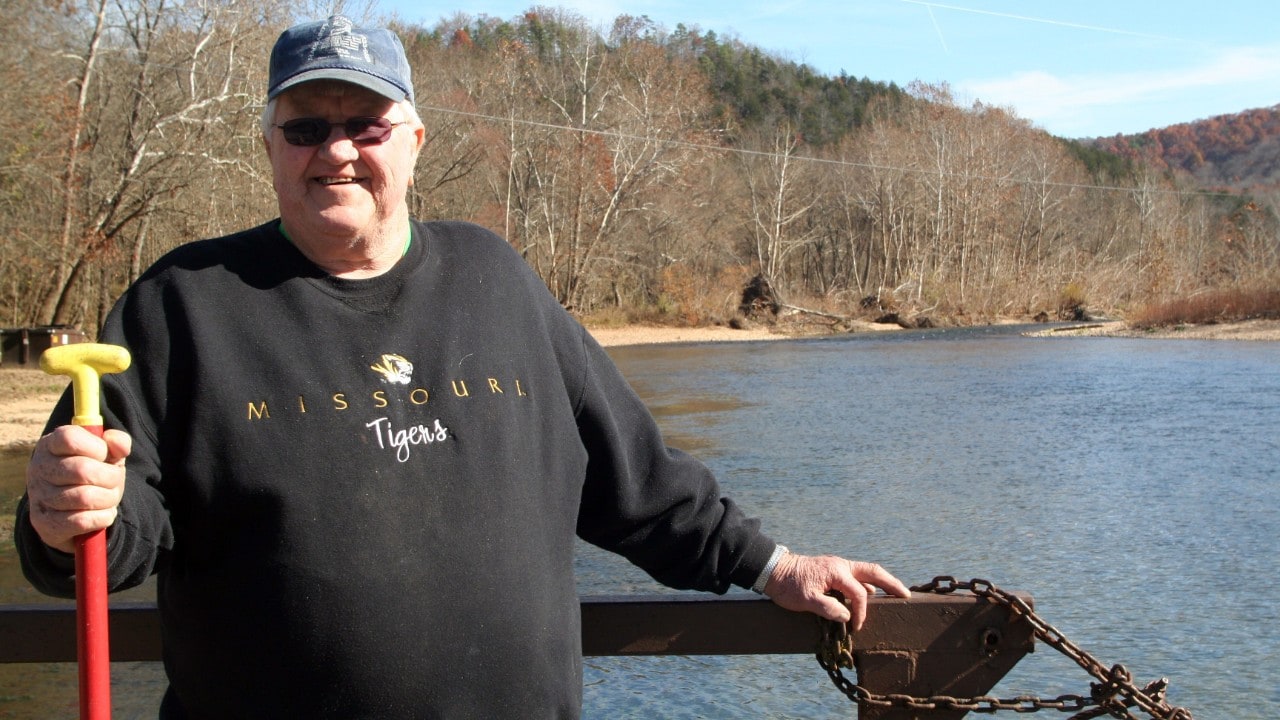
Gene Maggard operates Akers Ferry Canoe Rental and is the dean of Ozark outfitters.
A Gift to Mankind
The lure of floating in the Ozarks is obvious once you are on the river. We start out as a group, but usually separate to take in the solitude and the scenery. One of our original members is a Type A fellow who worked at a brokerage firm. We seldom see him sit still until he is in the cockpit of his kayak, absorbed by nature’s sensory overload.
My floating tradition among friends has seeped into my family's traditions, too. The usual request from my son and daughter when they returned from college for a visit was, “Dad, can we go floating?” They needed to unload some tension. As one of my favorite outfitters explains it: “The river has a way of quietin’ your mind.”
Last November, my buddies and I ended our float at Akers, where Gene Maggard and his family run Akers Ferry Canoe Rental. He charges four bucks a vehicle to take you across the river on the last ferry that is powered by the current of the river in the national park system.
Maggard’s ancestors came to the Current River Valley in the early 1800s, arriving before Missouri was a state. He is the dean of river outfitters and served 18 years as the president of the Missouri Canoe and Floating Association.
Maggard, 76, has spent his entire life on the Current River and can explain the pull that keeps people like me and my friends coming back for more.
“The Current has a lot of character that most rivers don’t have,” he said. “You have mink and otter running along the banks, you have bald eagles and belted kingfishers flying overhead, and the fishing’s not bad. I like all the seasons, but my favorite is spring when everything is coming to life. The wildflowers are blooming, and the people return to swim and play. To me, it seems like God created the river as a gift to mankind.”
Floating certainly has been a gift to this group of friends, who know that the surprises and uncertainties that can make life a struggle will disappear with our return to the water.
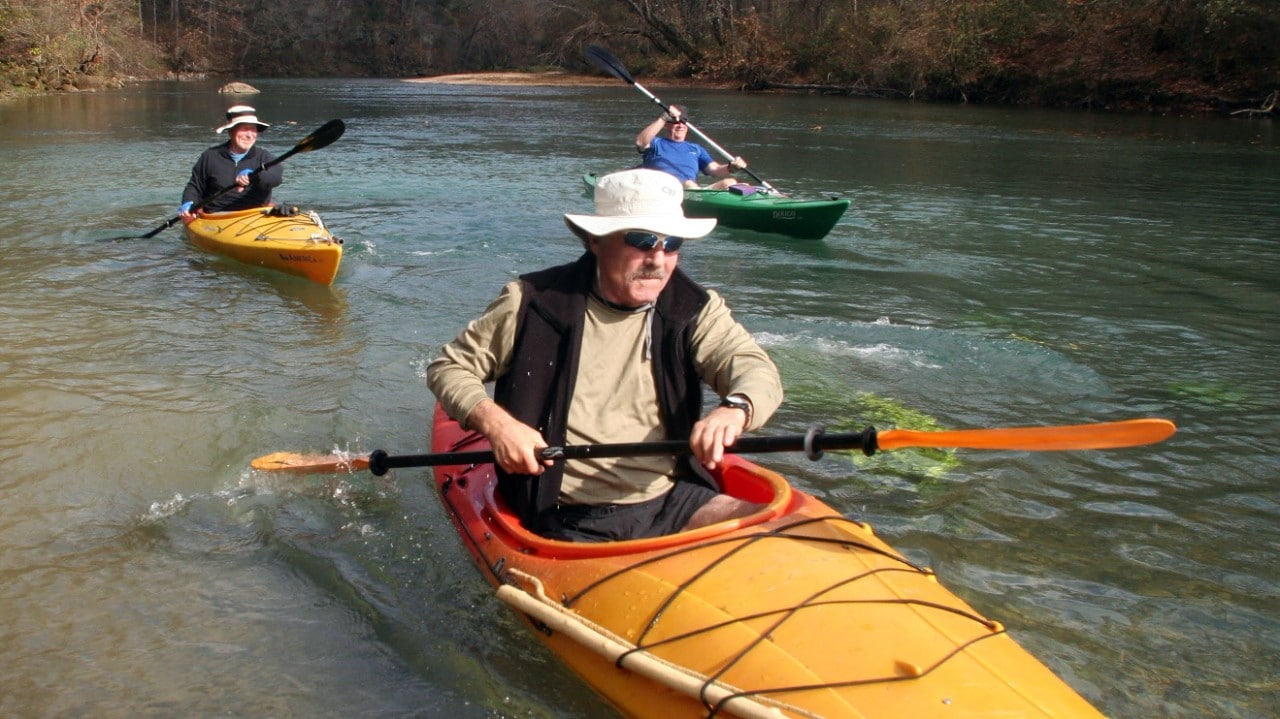
Paddling down the river
Related
Read more stories about Missouri.
- Top 5 Ozark Rivers to Float
- Best Places to See Bald Eagles in the Midwest
- Learning to Make Pottery in New Orleans and Gulf Coast
- Missouri Trips
- Weekend Getaway to Echo Bluff State Park
- Floating on Ozark Rivers
- Nostalgic Route 66 Road Trip: Albuquerque to St. Louis
- Nostalgic Route 66 Road Trip: St. Louis to Chicago
- Weekend Getaway to St. Louis, Missouri
- Weekend Getaway for Kids in St. Louis, Missouri
- Weekend Getaway to St. Louis for Food


